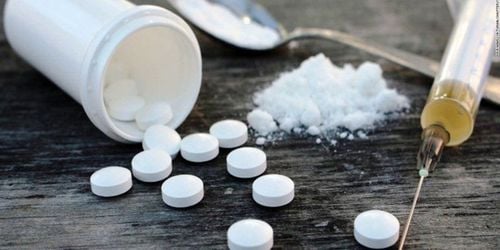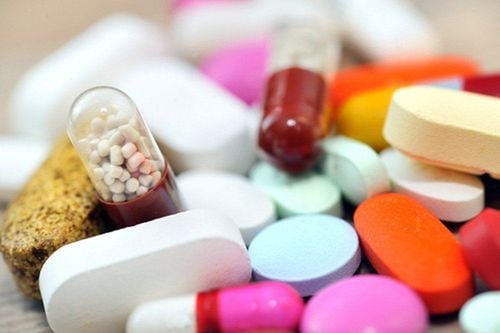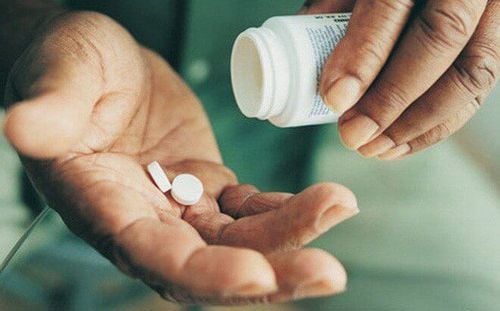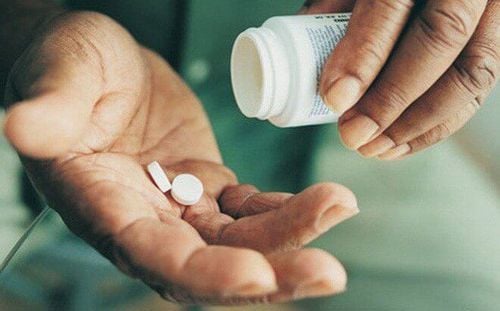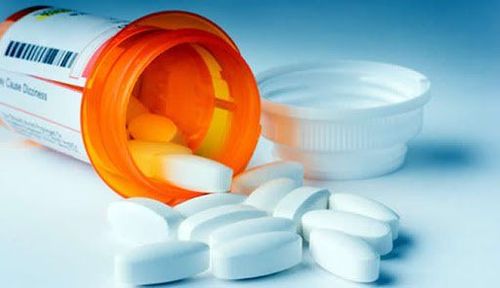This is an automatically translated article.
This article is professionally consulted by Master, Doctor Nguyen Le Duc Hoang - Emergency Medicine Doctor - Emergency Department - Vinmec Danang International Hospital.Acute poisoning and overdose of opioids are very dangerous if not diagnosed and treated promptly. So, how to accurately diagnose and promptly treat acute poisoning with opioids and opioids overdose?
1. Symptoms of poisoning, overdose of opioids
1.1 Clinical The clinical manifestations in patients with opioid poisoning were found to include:3 classic symptoms in people with poisoning are central nervous system depression, respiratory depression, and pupillary constriction. Other symptoms such as decreased tendon reflexes, hypothermia, hypotension, bradycardia, decreased intestinal motility, cyanosis Neuropathy changes from mild sedation, lethargy to coma, patients at risk of coma worms at risk of aspiration pneumonia Patient convulsions may occur after injection of fentanyl , sufentanyl ... Hypoventilation, respiratory rate decrease, cyanosis Noncardiac pulmonary edema Miosis is always present in about 5 minutes after injection, lasting at least 6 hours Bradycardia, hypotension because opioids increase activity of the parasympathetic nervous system, decrease sympathetic activity and release of histamine Drug-induced bradycardia and increased activity autonomic, hypertonic, rectal sphincteric sphincteric Acute rhabdomyolysis, renal failure may occur with heroin methadone or propoxyphene 1.2 Subclinical Patient will be diagnosed More accurate with specific laboratory methods:
Diagnostic tests for opioids in blood, gastric juice, and urine qualitatively When the concentration of heroin in the blood is of little clinical value, it can be detected in the blood within 36 hours. 6 - MAM (6 monoacetyl morphine) has a short half-life in blood (38 minutes) but is detectable in urine by chromatography and is evidence of heroin use. In addition, a rapid test for urinary heroin can be used.
A positive qualitative test only suggests a patient's use of opioids. The detection of opioids in the urine may be helpful in the diagnosis of opioids intoxication. A complete blood count test showed an elevated white blood cell count due to the reaction. Test BUN, Creatinine, Ionogram, AST, ALT, electrocardiogram to evaluate possible complications in patients with coma, opioid-induced respiratory failure. ECG: methdone can cause QTc prolongation, propoxyphene can widen the QRS complex. When arterial blood to monitor respiratory failure. Cardiopulmonary X-ray in patients addicted to opioids showed damage to the right parenchyma in the two lung fields, even though there were no clinical symptoms of pneumonia. X-ray also showed acute pulmonary edema due to acute poisoning. Screening tests for other causes of coma, sometimes requiring a differential diagnosis, as ordered by a physician include a CT scan of the brain, an MRI of the brain.
2. Diagnosis of acute poisoning and overdose of opioids
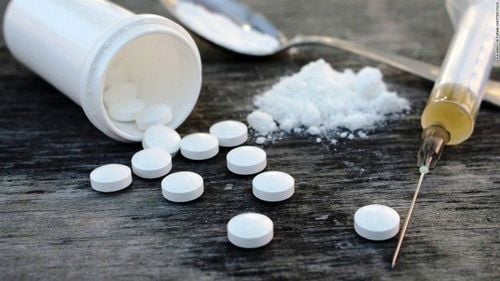
3. Treatment of poisoning, opioid overdose
3.1 Local management The patient should be ensured breathing, use antidote. Place the patient in a safe side position if there is no respiratory distress. In case the patient stops breathing or breathes slowly, it is necessary to squeeze the balloon through the mask 14-16 times/minute. If cardiac arrest, apnea requires emergency care in the order of C-A-B.Besides, the patient needs to be given intramuscular or intravenous injection of Naloxon 0.4mg immediately and repeated every 3-5 minutes until the patient regains consciousness, breathing, no cyanosis, 3-4 mm pupils. can inject up to 2mg at a time, the total dose can be up to 10mg). Add Seduxen if convulsions occur.
3.2 Hospital management Ensure breathing by having the patient breathe moist oxygen through a mask with a spare bag. Endotracheal intubation, mechanical ventilation if there is respiratory failure, respiratory arrest, slow breathing Elimination of toxins: total bowel lavage can be applied to patients taking multiple opioid packets, avoiding gastric lavage, surgery may be possible. Opioid pack removal surgery if intestinal obstruction is present. Use single-dose activated charcoal 1g/kg + sorbitol 1g/kg orally if the patient is taking oral opioids and is hospitalized within 1 hour after taking it and is awake. In most cases, however, it is best to delay activated charcoal until symptoms are reversed with naloxone. Use of specific antidote: Naloxone Naloxone is an antagonist of all opioids, with a specific effect that reverses the respiratory depression, CNS depression, and hypotensive effects of opioids.
Can be used in many ways intravenously, intramuscularly, and subcutaneously. In cases where an intravenous line cannot be established, intramuscular, sublingual or intratracheal injection can be used.
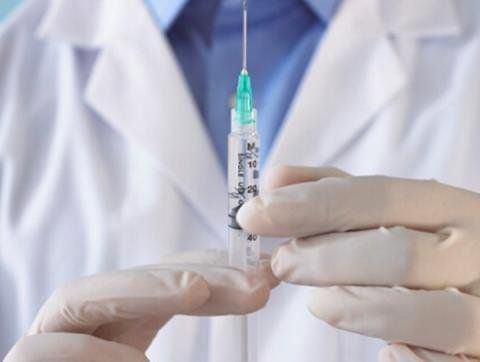
The drug has a quick effect after 2-3 minutes, the duration of action only lasts from 60-90 minutes, shorter than the effect of all opioids, except fentanyl. When managing opioid poisoning or overdose, it is necessary to give a repeated antiretroviral drug or continuous infusion of naloxone if the patient has severe opioid toxicity. Naloxone can cause early drug deficiency syndrome in patients with opioid dependence, but high doses are effective in preventing respiratory depression in this syndrome. Methadone requires a treatment duration of 24-48 hours, levo-a-acetylmethadol requires a 72-hour treatment. Patients who are awake and asymptomatic for 4-6 hours after a single dose of Naloxone can be safely discharged from the hospital.
Patients taking opioid packets should be admitted to the intensive care unit with close monitoring of respiratory rate and consciousness (packs may break) until the packets are eliminated.
Note: Heroin can be mixed with scopolamine, cocaine, clenbuterol, caffeine to change the clinical picture. Rare complications are hypotension, bradycardia, pulmonary edema.
Patients with severe life-threatening opioids poisoning who often have weak breathing, yawn, or stop breathing (respiratory rate <10 breaths/minute) need to be treated:
Intubation, mechanical ventilation Naloxone (adults and children) ): start with 0.4 mg (then depending on response, keep the same dose or increase the dose gradually to 2 mg) or start immediately 2mg, IV fast, repeat every 3 minutes until depression improves inhalation (maximum dose response may be up to 10mg). For children under 5 years of age or whose body weight is less than 20 kg, the dose should be given as 0.1 mg/kg/time. For patients with only CNS depression, without respiratory failure (breaths > 15 breaths/min):
Inhale humidified oxygen 4 liters/minute through the nasal canula. Naloxone 0.4mg intravenously, monitored and can be repeated after 20-60 minutes. Monitor every 20 minutes, assess Naloxone response by breathing. If there is no response, the dose can be increased up to 2mg/time IV. In patients with opioid addiction without respiratory depression, small doses of naloxone (eg, 0.05 mg IV) are used to prevent opioid withdrawal syndrome.
Patients with acute pulmonary edema:
Intubation, mechanical ventilation using high PEEP. Treatment of acute pulmonary edema: diuretic Do not use Morphine. Naloxone 2mg booster injection every 3 minutes until respiratory status improves (maximum dose response may be up to 10mg). Continuous infusion phase of naloxone:
Applies to any opioid, especially a long-acting one like methadone (30-36 hours). Continuous infusion based on consciousness, patient breathing rate responds after the first dose. Continuous infusion will prevent re-respiratory failure because naloxone has a shorter half-life than opioids. Infuse 0.4 - 0.8 mg/hour in adults and 0.01 mg/kg/hour in children, assessed every hour in adults and every 5 minutes in children. Continuous infusion can be increased if consciousness is reduced. Infusion rate should be reduced by 50% every hour for the next 6 - 10 hours (longer duration of action for most opioids) When the dose is reduced, if the patient exhibits re-intoxication, a booster dose of 1/2 should be given. first dose, then maintain a continuous intravenous infusion. Adjust the dose of Naloxone infusion, increasing or decreasing the dose by 1/2 each time. Monitor Naloxone response by breathing rate, state of consciousness. Adjust the dose of Naloxone infusion to suit each person
If the first dose is successful (0.4 - 0.8mg IV), give 2/3 of this dose as a continuous infusion.
If after first dose failure:
Intubation, balloon compression, oxygen Repeat every 2-3 minutes up to 10mg before infusion If after first dose, patient shows signs of drug deficiency:
Pause If present Decreased consciousness, repeat 1/2 dose until effective. Calculate appropriate initial dose then give continuous infusion If patient shows signs of drug deficiency during infusion :
Stop infusion until this symptom resolves Start infusion again at 1/2 initial rate, monitor Find other causes of drug deficiency If patient becomes unconscious during infusion :
Give 1/2 first dose and repeat until good Increase infusion to 1/2 of initial rate Find your way into the bloodstream to continue opioids or other causes of decreased consciousness.
4. Support in the treatment of poisoning and overdose of opioids
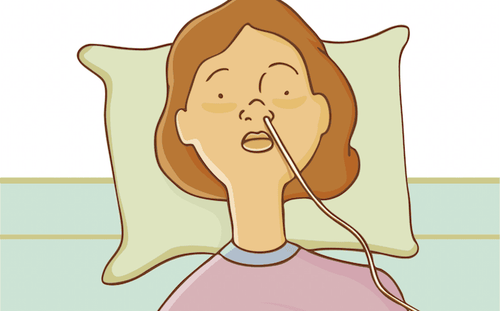
Adequate fluid replacement according to central venous pressure and daily urine output. Use vasopressors if hypotension persists. Homeostasis: water, electrolytes, acid-base sedation: use benzodiazepines when:
Convulsions Irritated Struggling Breathing, ... Nutrition, hygiene:
Feeding through a nasogastric tube if the patient mechanical ventilation Oral feeding if the patient is awake, eating and drinking Hygiene, turning, anti-ulcers Vinmec International General Hospital is one of the hospitals that not only ensures professional quality with a team of doctors and nurses. industry leading, modern technological equipment system, but also outstanding with comprehensive and professional medical examination, consulting and treatment services; civilized, polite, safe and sterile medical examination and treatment space.
Please dial HOTLINE for more information or register for an appointment HERE. Download MyVinmec app to make appointments faster and to manage your bookings easily.





